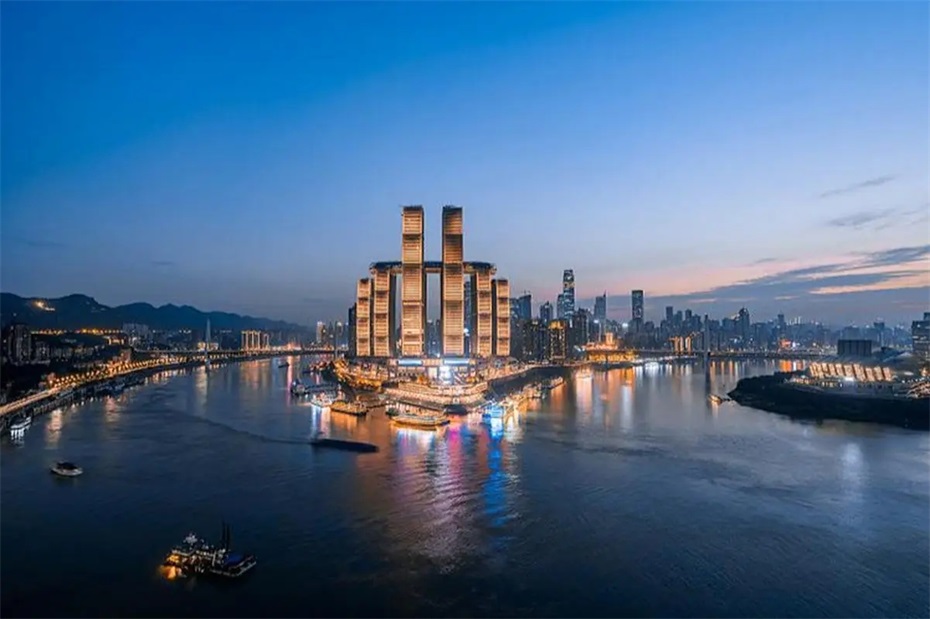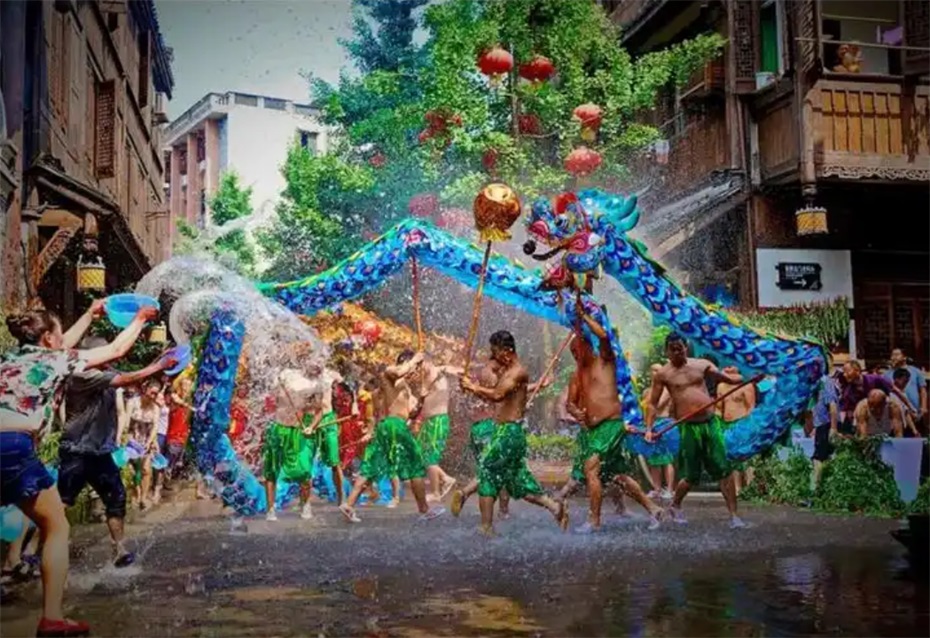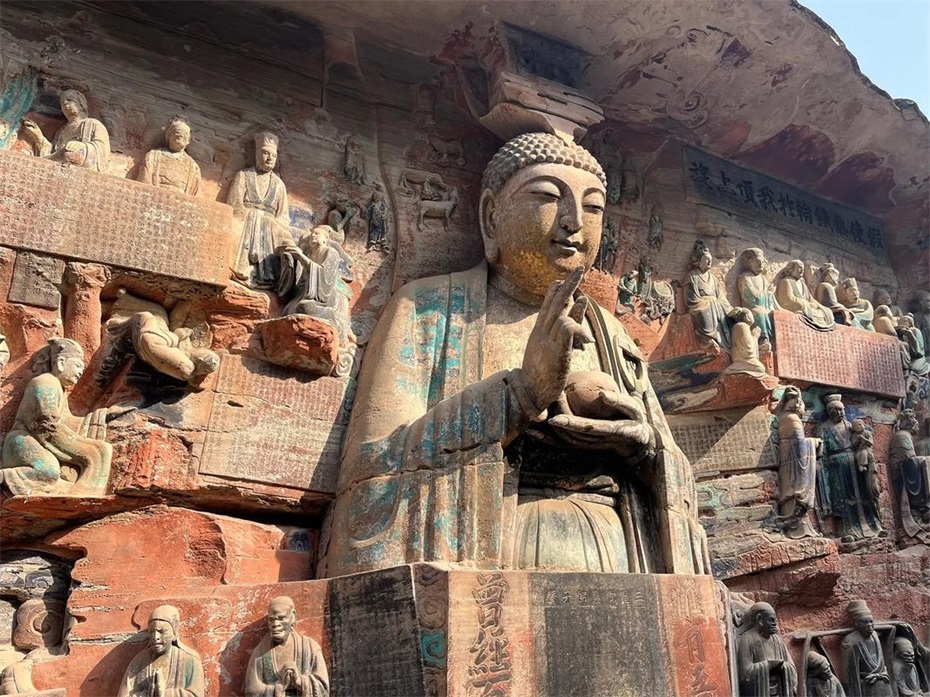Chongqing City
Overview of Chongqing City

Chongqing, abbreviated as "Yu", is one of the four municipalities directly under the central government in China, a national central city, and the economic center of the upper reaches of the Yangtze River. The total area of the city is 82400 square kilometers, with 26 districts, 8 counties, and 4 autonomous counties under its jurisdiction, and a permanent population of 32.1334 million people (2022 data). In 2022, the city's GDP will reach 2.91 trillion yuan, ranking the fourth in the country. It is an important strategic fulcrum of China's western development and the connection point between the "the Belt and Road" and the Yangtze River Economic Belt.
Chongqing currently governs 26 districts including Yuzhong, Dadukou, Jiangbei, Shapingba, Jiulongpo, Nan'an, Beibei, Yubei, Banan, Wanzhou, Fuling, Qianjiang, Changshou, Jiangjin, Hechuan, Yongchuan, Nanchuan, Qijiang, Dazu, Bishan, Tongliang, Tongnan, Rongchang, Kaizhou, Liangping, and Wulong, as well as 8 counties including Chengkou, Fengdu, Dianjiang, Zhongxian, Yunyang, Fengjie, Wushan, and Wuxi, and 4 autonomous counties including Shizhu Tujia Autonomous County, Xiushan Tujia and Miao Autonomous County, Youyang Tujia and Miao Autonomous County, and Pengshui Tujia and Miao Autonomous County. As a famous "mountain city", "river city" and "fog city" in China, Chongqing is known as the "3D magical city" and an important modern manufacturing base in China.
2Ӣ Geographical features
1. Location characteristics
Chongqing is located between 28 ”ć 10 ”ä -32 ”ć 13 ”ä N latitude and 105 ”ć 11 ”ä -110 ”ć 11 ”ä E longitude in southwestern China, in the upper reaches of the Yangtze River. It borders Hubei and Hunan to the east, Guizhou to the south, Sichuan to the west, and Shaanxi to the north. The city is located in the transition zone between the Qinghai Tibet Plateau and the the Middle and Lower Yangtze Valley Plain in the middle and lower reaches. It is an important node city of the Yangtze River Economic Belt and the operation center of the new land and sea channel in the west.
2. Terrain and landforms
The terrain of the city is mainly mountainous and hilly
North: Daba Mountain
Eastern region: Wushan
Southern region: Wuling Mountain
West: Huaying Mountain
Central region: Parallel ridges and valleys
The confluence of the Yangtze River and Jialing River forms the main urban peninsula
3. Water system distribution
The Yangtze River system: runs across the entire city
Jialing River system: an important tributary of the Yangtze River
Wujiang River system: the main rivers in the southeast
Fujiang River system: the main river in the western region
4. Climate characteristics
Belonging to subtropical monsoon humid climate:
Annual average temperature: 16-18 ”ę
Annual precipitation: 1000-1400 millimeters
Significant features: Warm winter and early spring, hot summer and cool autumn, with many clouds and mist
3Ӣ Historical context
1. Organizational history
Pre Qin period: the capital city of Ba State
Qin Dynasty: Establishment of Ba Commandery
Sui Dynasty: Yuzhou was named
Southern Song Dynasty: Establishment of Chongqing Prefecture
1929: Formally established as a city
1997: Establishment of a municipality directly under the central government
2. Important historical periods
During the War of Resistance Against Japan: wartime capital
Third line construction period: important industrial base
During the period of direct administration: the pivot of the Western Development Strategy
New Era: Construction of the Chengdu Chongqing Economic Circle
3. Urban development
Ancient times: Military stronghold in the upper reaches of the Yangtze River
Modern times: inland port cities
Modern: National Important Central City
Contemporary: Construction of International Metropolises
4Ӣ Cultural Essence
1. Regional cultural characteristics
Ba Yu culture: bold and straightforward, resilient and tenacious
Anti Japanese War Culture: Inheritance of Red Rock Spirit
Immigrant Culture: Integration of Hubei, Guangxi and Sichuan
Dock culture: Pao Ge culture, Bang Bang Jun
2. Intangible Cultural Heritage

Folk Art: Bronze Beam Dragon Dance, Qijiang Prints
Traditional skills: Rongchang folding fan, Liangping bamboo curtain
Folk Culture: Tujia Hand waving Dance, Miao Mountain Stepping Festival
3. Dialect characteristics
Chongqing dialect: Southwest Mandarin Chengdu Chongqing dialect
Tujia language: areas inhabited by ethnic minorities
Miao language: Miao ethnic settlement area
Hakka dialect: Some immigrant areas
5Ӣ Tourist destinations
1. World Heritage Sites

wulong karst
Jinfo Mountain
Wulipo National Nature Reserve (Shennongjia World Natural Heritage Extension Project)
2. 5A level scenic spot
Dazu Rock Carvings Scenic Spot
Wushan Xiaosanxia - Xiaosanxia
Wulong Karst Tourist Area
Youyang Taohuayuan Scenic Area
Wansheng Heishan Valley Scenic Area
3. Featured tourism
Urban style tour: Hongyadong, Yangtze River Cableway
Three Gorges Cruise Tour: Qutang Gorge, Wuxi Gorge
Red Study Tour: Hongyan Village, Geleshan Mountain
Ancient Town Leisure Tour: Ciqikou, Gongtan Ancient Town
6Ӣ Food map
1. Characteristics of Chongqing cuisine

Jianghu cuisine: Spicy Chicken, Maoxuewang
Sichuan Cuisine of Chongqing Style: Boiled Fish, Fuqi Feipian (Sliced Beef and Ox Tongue in Chilli Sauce)
Chongqing Xiaomian: The Most Representative Breakfast
2. Featured snacks
Hot and Sour Rice Noodles
Shancheng rice dumpling
Chen Mahua
Taste of Hu Dou
Hechuan Peach Slices
3. Specialty drinks
Fuling pickled vegetables
Jiangjin Rice Flower Candy
Yongchuan fermented black beans
Chongqing Beer
7Ӣ Development Status
1. Industrial system
Automobile manufacturing: leading enterprises such as Changan Automobile
Electronic Information: The World's Largest Laptop Production Base
Equipment manufacturing: general machinery, instruments and meters
Modern service industry: finance, logistics, exhibition
2. Transportation network
Aviation: Jiangbei International Airport (Terminal 3A)
Railway: "Mi" shaped high-speed railway hub
Water transportation: the largest port in the upper reaches of the Yangtze River
Urban transportation: The operating mileage of rail transit exceeds 500 kilometers
3. Open platform
China (Chongqing) Pilot Free Trade Zone
Western Land Sea New Channel Operation Center
China Singapore (Chongqing) Strategic Interconnection Demonstration Project
Yangtze River Upstream Shipping Center
From the confluence of the two rivers to the embrace of mountains, from the ancient charm of Bayu to the modern metropolis, this "city of mountains and waters, beautiful place" is writing a magnificent chapter of Chongqing's development in the new era with the urban spirit of "traveling thousands of miles, reaching the vast". There is both the poetic sense of "the boat has passed the mountains" and the pride of "daring to be the first in the world", which is becoming an important window to show Chinese path to modernization.
simliy
